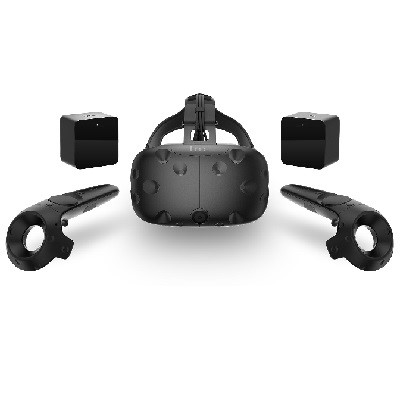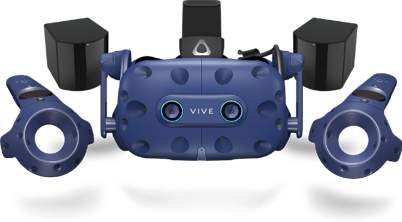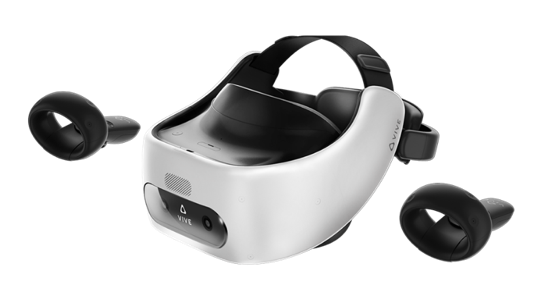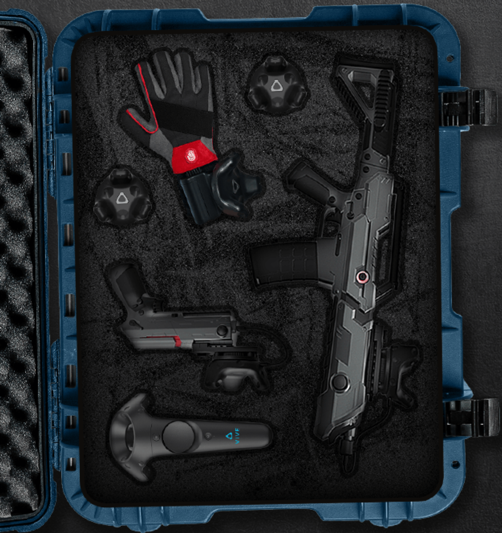HTC Vive

The HTC Vive is a collaboration project of software company Valve and tech giant HTC. Not going into any details of how they came together, the Vive is a truly awesome product that offers substantial flexibility and sophisticated interaction opportunities. The main difference to the Rift is that it does not require users to remain in front of a computer screen (or a fixed location). The Vive comes with room sensors that allow users in small spaces to actively move around (you saw the intro VR video), which is awesome. Additionally, the controllers allow for tracking locations of hands, provide advanced interactivity, and provide haptic feedback in the form of vibrations.
It is always very difficult to explain experiences one has in a VR environment like the Vive to someone via text … one of the best solutions without actually experiencing it oneself is this video filmed using a green background (see intro video again).
The Vive also has a 2160 x 1200 resolution, offers a 90 Hz refresh rate, and a 110-degree field of view. In contrast to the Rift, the tracking field is 15 x 15 feet. The minimum computing requirements are similar to the Rift: NVIDIA GeForce GTX 970 /Radeon R9 280 equivalent or greater, Intel Core i5-4590 equivalent or greater, 4GB+ of RAM, Compatible HDMI 1.3 video output, 1x USB 2.0 port.
On January 8th, 2018, HTC released an updated version of Vive called Vive Pro. The new HMD has a higher resolution at 1440 x 1600 resolution per eye and a refresh rate of 90 Hz. Thanks to its sophisticated tracking sensors (called lighthouses) Vive provides up to 22’11” X 22’11” room-scale tracking of headset and controllers. Vive Pro is also equipped with two cameras embedded into the headset, facing outward. These cameras can be used to bring the real world into VR (Sounds similar to a type of xR previously discussed?). Moreover, Vive affords multi-user interaction in the same physical space. Notwithstanding, each user requires their own dedicated computer and play-area.
In November 2018, VIVE released their first untethered all-in-one headsets called Vive Focus. The focus utilizes inside-out-tracking technology and affords 6-DOF tracking. It has a 3K AMOLED display, with a resolution of 2880 x 1600 and a refresh rate of 75 Hz, and a Qualcomm Snapdragon™ 835 processor and two controllers.
In addition to awesome and popular HMDs, VIVE also provides a variety of external sensors and controllers that can be used to create a much richer and close-to-reality VR experiences. These include trackers that can be attached to arms and legs to provide a feeling of embodiment of users in VR (tracking and projecting the hand and leg movements of users in VR), controllers that look like weapons, and VR gloves that cater for hand and finger actions in VR while providing haptic feedback to users.


